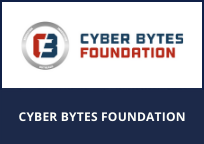Natural Authentication for Emergency Management AR

Cyber Bytes Foundation
In May 2021, the Cyber Bytes Foundation (CBF) was awarded $1M for the Public Safety Innovation Accelerator Program: Augmented Reality (AR) cooperative agreement.
First responders routinely operate in harsh environmental conditions while being subjected to elevated levels of stress. They handle complex equipment that can be difficult to carry, are required to act quickly, and have tremendous responsibility for the lives and well-being of their colleagues and of those whom they serve. For a first responder to feel comfortable using new equipment, whether in the field or during training, that equipment must be durable, feel natural in use, and add value to the mission.
With recent advances in AR, CBF’s project intends to explore how to authenticate first responders to augmented reality devices in such a way that feels natural, does not produce false positives or false negatives, and happens in the background without requiring much user action.
Meet the team
CBF maintains a consortium of over 3,000 individuals, companies both large and small, academic institutions, other nonprofits, and even government representatives. This consortium is composed of people and organizations that work together to solve cybersecurity challenges. The team primarily includes:
- Principle Investigator Joel Scharlat, Cyber Bytes Foundation, brings over 20 years of experience in leading and managing diverse teams, including hardware and Agile software development projects.
- Technical Subject Matter Expert Kavya Pearlman, XR Safety Initiative, brings over 10 years of diverse experience in cybersecurity and XR management and leadership including security and privacy framework development and adoption.
- Project Manager and Lead Developer Rachel Michelson spent 22 years at Motorola, growing from a software developer to a systems architect for public safety two-way radio systems, including both APCO-25 and Tetra standards.
Project overview
The objective of CBF’s project is two-fold. First, they will identify authentication methods for representative AR devices that first responders may use in the execution of their duties. Second, they will identify and provide, through a publication, best practices, and controls to mitigate any identified security and privacy vulnerabilities we identify with the authentication methods.
This project explores several alternative AR headsets in combination with several biometric, inferred biometric, and behavioral authentication methods as applicable to the needs of first responders. During this project, CBF will select several promising authentication technologies, create prototype software applications to authenticate the user, and test all combinations on a group of first responders.
Potential impacts of the project
A comparative analysis of these user authentication methods will help improve user authentication ergonomics for future products aimed at both training and in-the-field AR use by first responders. This can help develop new and improved ways to use hands free authentication methods to comply with a myriad of restrictions placed on public safety organizations by the state and federal government. The methods designed and tested in this project can be valuable for more than just AR, freeing users from removing their attention from the immediate task at hand, to one that is often more important to the safety and security of PSOs and the people they serve.

